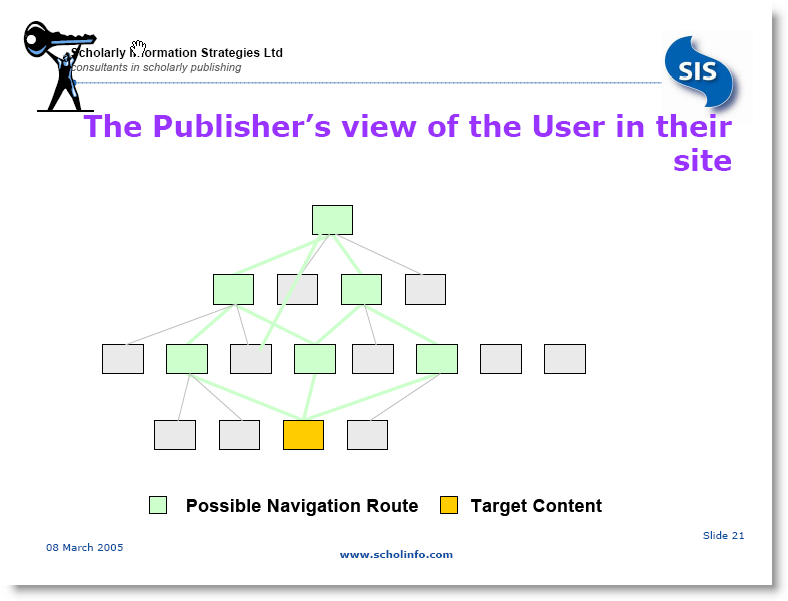This picture is from a talk by Chris Beckett about how publishers should optimize their web presences for use in changing network environments (some more about this below). I used it in a presentation at the Montana State University Libraries Symposium, where colleagues from academic librarians in Montana discussed challenges and futures in the context of network disintermediation and reintermediation. I thought it was very appropriate to the topic.
In questions, there was a suggestion that libraries faced similar issues in relation to their own web presences and that with some adjustment, the picture might equally apply to them. Most library users really wanted to get directly at what interested them and not necessarily be detained by help, navigation or other features. I have used it elsewhere also with similar discussion afterwards.
At one stage, we spoke about the user not coming to the library building any more. Now I hear more about the user not coming to the library website anymore.

Here is what I said about the Chris Beckett presentation before:
Chris Beckett’s latest – The New World Order in Collection Development: The Commercial Perspective [pdf] – is a good place to look for an overview of concerns. He has some slides showing the systems framework through which library resources are typically being made available (13, 20) and showing how the publisher sees their web users (21, 22). He has a suggestive slide on the dynamics of social software (68). What caught my eye was his ‘what it means for publisher’ slide, coming after a familiar round-up of Web 2.0 stuff:
- Your site will become increasingly invisible to readers
- You need to optimise your content for the search interfaces that users use including the library world
- But more importantly you need to optimise it for the research world:
- Your content will continue to be important as long as you expose it to those social software tools and enable user generated content and sharing e.g. Mashups
- But this will require better and more flexible business models that can provide realtime access to your metadata and primary data
So, publishers should be interested in optimizing presentation for resolvers and metasearch, but this may be less important in the medium term than optimizing for the ways in which researchers use network information. Social bookmarking sites and search engines become important in this context, as does opening up APIs to allow materials to be remixed with other applications. This seems somewhat ahead of practice at the moment, but it is interesting to see it laid out as advice in this way. [Lorcan Dempsey’s weblog: The pursuit of users]
Related entries:



